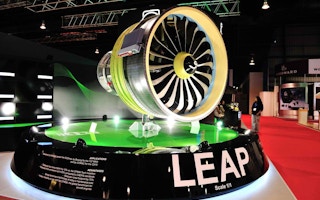After six years of negotiations over UN greenhouse gas regulations, the aerospace industry dodged the threat of spending billions of dollars to re-engineer airplanes.
The industry got help from European and Russian negotiators, who successfully argued that the standards should not render newer, more efficient planes obsolete, according to three people familiar with the UN talks in Montreal this month.
The latest planes from companies such as Boeing Co and Airbus Group SE - which cost tens of billions of dollars to develop - will meet the new emissions standards.
European negotiators also led an effort to forge a compromise exempting older, fuel-guzzling aircraft from the standards until 2028 - five years longer than a competing proposal pushed by US negotiators, according to US and European sources with direct knowledge of the talks.
The new rules - criticised as too lenient by environmentalists - were adopted by UN’s aviation agency, the Montreal-based International Civil Aviation Organization. ICAO has no direct power to craft or enforce regulations but facilitates negotiations over standards that become mandatory for the agency’s 190 member countries.
The stakes are high. A 2012 ICAO paper predicted that international aviation emissions would increase 68 percent between 2010 and 2020, from 390 megatonnes of carbon dioxide equivalent to 654 megatonnes.
Projections for how much the ICAO rules will lower carbon emissions vary widely. The White House estimates they would reduce as much as 650 million tonnes of carbon dioxide between 2020 and 2040 - or the equivalent of taking 140 million cars off the road during the same period.
Environmental advocates argued the new standards will do little to lower emissions, especially with air traffic expected to double over 15 years, according to ICAO projections. ICAO did not make any public estimate of carbon emissions that the new standards would eliminate.
The rules merely ratified what manufacturers were already doing, said Daniel Rutherford, an aviation specialist for the International Council on Clean Transportation, a non-profit group that closely followed the ICAO talks.
“ICAO has recommended targets that new models will easily pass and that won’t require improvements from older, less efficient models until well after they’ll be out of production anyway,” he said.
Negotiators are not permitted to talk to the media under ICAO rules governing the talks, but three officials with knowledge of the talks spoke to Reuters on condition of anonymity.
Concerns about industry and economic impact drove the compromise, according to US and European officials. More stringent standards could have cost the industry huge amounts of money. A single new engine, for instance, can cost billions of dollars to design and certify.
“The negotiation was not completely detached from commercial considerations,” a European diplomatic source acknowledged.
US negotiators met resistance on pushing for a quicker phase-out of less efficient planes, according to an American official familiar with the talks.
“There was definitely a high bar to getting agreement on a 2023 production cutoff,” the US official said.
Supporters of the new rules say they will ensure that companies continue building on efficiencies gained in plane makers’ latest generation of jets, such as the Boeing 737 MAX and the A320neo.
“This is the same conversation we have on all standards,” said one negotiator involved in the talks. “What is the balance between pushing industry along without breaking industry by pushing them too far?”
Boeing spokeswoman Jessica Kowal said the company supports the ICAO standard “because it is ambitious in terms of CO2 emissions reduction, it is aligned with customer needs for increasing fuel efficiency, and it’s technologically achievable in an industry with a long lead time.”
A spokesman said Thursday that Airbus supports the new standards and continues to invest in “reducing fuel burn, emissions and noise significantly.”
Both companies declined to comment on efforts they may have made to advocate for a specific outcome in the talks, which included negotiators from 22 nations.
Airbus, Boeing and their engine manufacturers have invested tens of billions of dollars in new technology to save fuel, which also cuts carbon emissions. Such efforts accelerated during a decade of relatively high oil prices.
Now, with a regulatory framework in place, standards can be more easily tightened in future, said Paul Steele, environment director at the International Air Transport Association, which represents airlines.
The clashes over standards for aircraft manufacturers are seen as a rehearsal for a broader fight over how global airlines may be required to contribute to greenhouse gas reductions. That debate continues this week with more high-level talks in Montreal.
Negotiations among transportation policy makers from 17 countries will focus on “market-based” regulatory regimes, with industry pushing a plan that would allow airlines to offset their emissions by buying carbon credits from designated environmental projects around the globe. A decision is expected in September.










